Kinson Key Games has just recently launched their first Kickstarter: Galactic Cruise. I am a backer of this project. For quite some time, I had Kickstarter set to let me know as soon as it went live. I was on the site within 90 minutes of its launch and I was astounded by what I saw. The project was well past its funding goal, and the top three pledge tiers, limited to a total of 50 people, were sold out (more on those later). I knew at that moment that I just had to talk with the people involved in this project!
Continue Countdown: 10… 9… 8… 7…
6…: I recall when I discovered this project. I was looking through board games on Kickstarter and was immediately pulled in by the aesthetic. The artwork is just plain gorgeous! As this is a game about sending people on luxury cruises in space, describe the process that resulted in this theme and the retro feel. Did you go through other options? Did the choice of aesthetic impact choices in gameplay?
When we first began the design process, the game was much more rooted in reality. As we developed the game and streamlined it more, taking the game in a more whimsical direction became a more and more attractive option. After our initial meetings with Ian O’Toole (and after discussion within our Facebook community), we decided to pursue the retro-futuristic feel that is in the game today. As we brought the game across the finish line, mechanically, that aesthetic definitely helped us make some design decisions and helped us craft the backstory of the game.
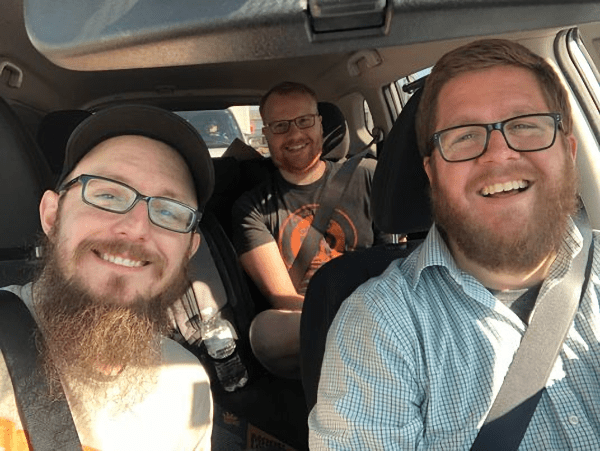
5…: I was checking out your website and noticed that you have been discussing this game with potential players since at least September 2022! This communication includes your newsletter and your Discord. With years of discussion (if you were to consider only those who are not consulted board game professionals), did any ideas end up in the game as a result of that communication? Were any early ideas dropped as a result? What sort of things changed with the game?
Since the game’s inception in May of 2021, we have played the game hundreds of times with at least that many people. Some of these people were designers and board game professionals, but a lot of those people were simply people who love games. Until a few months ago, every game we played with people was followed by a time of feedback and discussion–sometimes several hours’ worth of it—and the game really shaped up based on those discussions. The game has changed immensely over the last few years, and almost all of those changes served to streamline the game and make the experience as smooth as possible. In short, there are probably more things on the cutting-room floor than there are currently in the game in its final form.

4…: Continuing with a discussion of your process, it would appear that this game has taken several years to develop and balance. That is a great thing! Playtesting is very important, especially when it comes to games that rise above medium-weight. Tell me about your process for playtesting. How many playtests did you do? What types of playtesting were performed? How much of the game changed from inception to final product as a result of playtesting?
As I mentioned in the last question, so much of what the game is today is due to the hundreds of playtesters who played the game and offered their feedback over the years. I would say that, on average, we conducted about two playtests of the game per week (sometimes more and rarely less), and most of that was done via TTS, where we had players from all over the world play Galactic Cruise with us. It was through all those playtests that we were really able to pinpoint what fat to trim, how to improve our systems, and how to ultimately create the product that we brought to Kickstarter this month. A couple months ago, we transitioned into unguided playtesting, which we used to fine-tune our rulebook. On top of all of that, we also did a fair amount of in-person playtesting at various conventions, particularly last year (in 2023).

3…: This is your first game and I have to say: bravo! Everything I have seen so far excites me. I am so looking forward to getting this to the table! For those that pledge in your top three tiers (Revered Investor, Esteemed Shareholder, and Board of Directors), there is this line-item: “Each Future KKG Game & Expansion” – for a premium of $370, those 50 backers all get a subscription to your company! That is a really exciting concept! With that in mind, how many games do you have in the pipeline right now? How many would you say will become public in the next few years? Can you tell us anything about those projects?
Before we decided to go all-in on Galactic Cruise, we had perhaps a dozen or so games in some form of development. We are still excited about a lot of those projects, and we are also excited to potentially sign games designed by other talented folks. While there isn’t much I can reveal about any of that at the moment, I can say that our next planned project will be another project in the same universe as Galactic Cruise, which we hope to bring to Kickstarter sometime next year. Our hope would be to bring at least one product to market every year, with those products being a mix of new games as well as expansions for existing games in our product line. Our sincere hope is that the people who were willing to take a risk on those top tiers will feel that they have an excellent return on their investment very soon!
2…: For those that pledge in the top two tiers (Esteemed Shareholder, and Board of Directors), they get one of twenty prototype copies of the game. I can think of a lot of games that are revered classics where I would love to have a copy of an early prototype! You sold out of these pledge levels quickly, and the comments section is begging for more. Since this is your first game, did you expect such a demand for these? Were these two pledge levels limited to 20 due to the number of prototypes you had available? How is the prototype different from the final product?
We never dreamed that those two tiers would sell out as quickly as they did, nor did we anticipate the demand for more spots! The limited nature of those two tiers was absolutely dictated by our number of prototypes. In total, I believe we had 25 of them made, so capping the number at 20 gave us a little wiggle room for lost packages, damaged prototypes, etc. (but not a lot of wiggle room). The prototypes have some unfinished artwork on them, particularly on the main board. The shuttle segments in the prototypes have a flat, 2D shuttle exterior (in the final version of the game, Ian O’Toole crafted a more 3D look for the shuttles). Some of the iconography and coloration is different in the final version, and the included rules document still has the work-in-progress ruleset instead of the finalized rulebook. So, it’s certainly not 100% similar to the final product, but it is certainly playable for those folks!
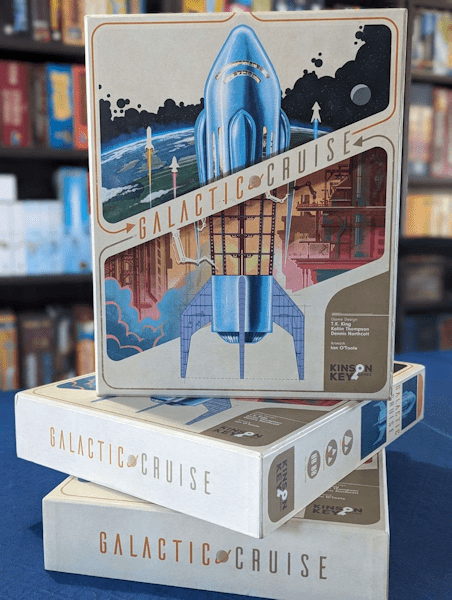
1…: Let’s talk about that top pledge level: Board of Directors! When I first read that as I was scrolling through the pledge levels, deciding what level to go for (for the record, I pledged at Future CEO level). I think my jaw dropped when I read that. For a total cost of $1,499, you get everything prior to this level and you “Become a Board Member.” I clicked on the details button and it said it again: you become a board member. I read the whole campaign page carefully and that is where I found what becoming a board member means: you get your name in a booklet with the game, a special title on your Discord, and an invitation to virtual meetings. This idea is brilliant! If you want proof, just look at the number of people practically begging you to expand these levels in the comments section. I have to ask: did you expect nearly 80% of your original funding goal of $50,000 would be fulfilled by 50 people in the first hour or so of the campaign? How did you come up with this idea and the pledge cost structure? Do you wish you had included more high-end pledge levels? Do you think anyone might have pledged at that level believing they were actually going to be put on the Kinson Key Games’ Board of Directors? 😉
We knew that if those top tiers got taken, our funding goal was mostly taken-care-of. However, we did not bank on that happening, so the fact that it happened was a humbling and pleasant surprise. Regarding how we came up with the idea, we knew we wanted to have the $499 pledge (which is basically our version of the Strategist pledge that Chip Theory Games does on their campaigns), and we wanted to have a pledge level that included all of that plus a prototype (the $999 level). The Board of Directors level was created when we had several people want to invest even more financially, and we wanted to give those people something special in return. So, in addition to getting all our future products and a prototype of Galactic Cruise, we also wanted to give those people the opportunity to be commemorated in our game (which we hope is a forever-in-print game), and we wanted to give those people a yearly opportunity to be present for our Annual General Meetings, where they get the inside scoop on some upcoming stuff long before the information is public. So far, no one has mistaken the pledge tier as an actual invitation to our Board of Directors.
Blast Off!
As indicated above, the Kickstarter was funded in just four minutes with 50 people pledging (and filling) the top three tiers! Everything about the game—from the retro aesthetic to the game-play overviews to the wonderful attitude in putting up with my questions—shows that Kinson Key Games has a bright future ahead of them. They take game design seriously, but not themselves. They are having fun! And that is how you make great games.


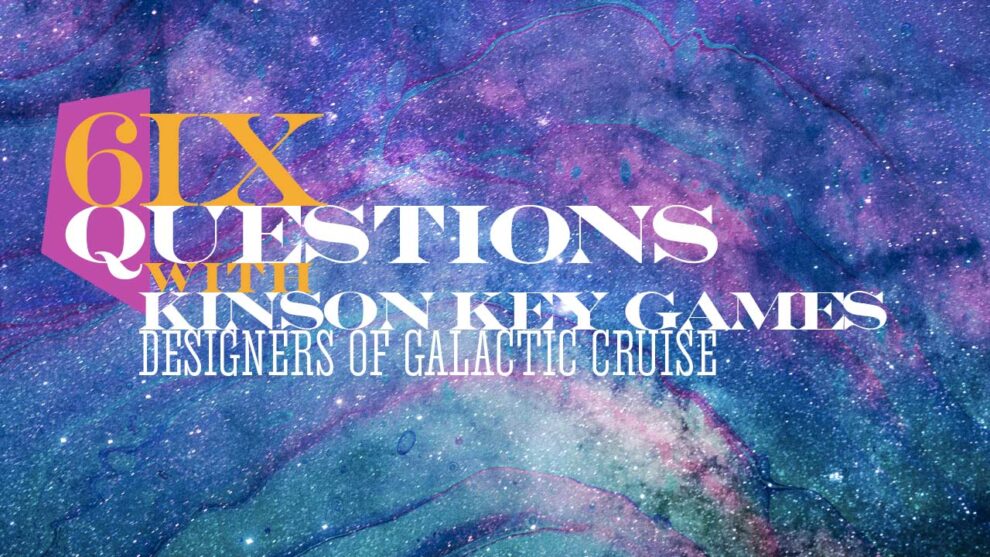
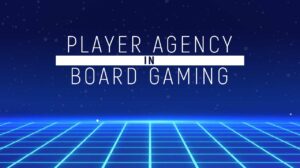
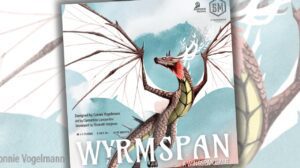






Great discussion! I hope to be able to play this game at the Nashville Tabletop Day *fingers crossed*
If you do, come back and tell us what you think! Really looking forward to getting this.